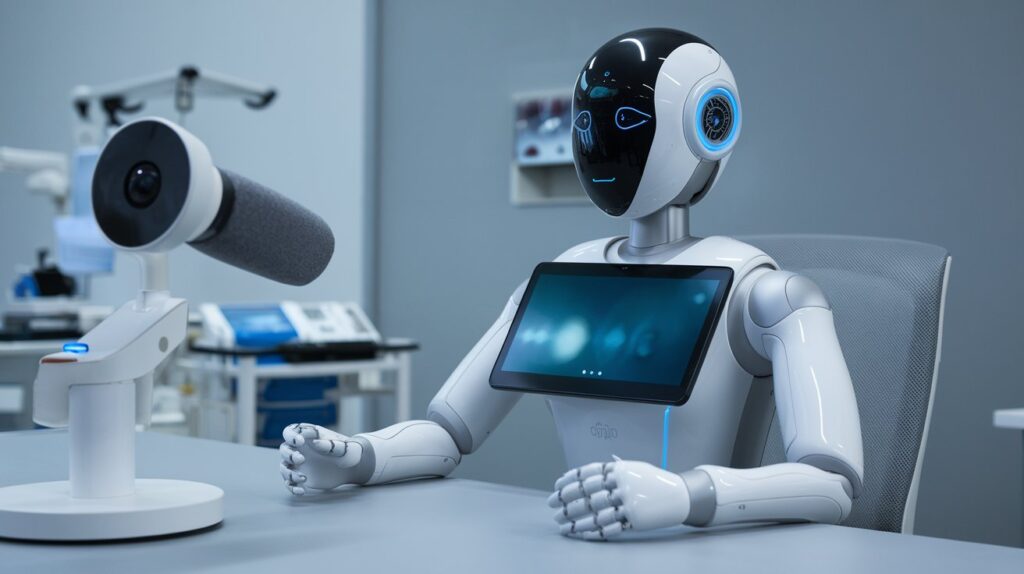Healthcare industry is drastically undergoing a significant change, with the most promising innovations leading such a change are those of Artificial Intelligence. In this regard, the use of Artificial Intelligence in telemedicine makes it more accessible, efficient, and personalized, transforming healthcare delivery. In the following blog post, we outline the role AI is playing to reshape telemedicine and benefits it gives out, followed by what it could bring forward to this exciting industry.
The Role of AI in Telemedicine
Telemedicine is provided where patients consult with doctors or other healthcare professionals through a digital platform without having to visit them in the flesh. Many advances in telemedicine are due to AI, and it is a field that promotes better services from healthcare providers, and it makes patients’ lives better as well.
Here are some ways AI is making a mark in telemedicine:
1. AI-Powered Diagnostics
AI can help doctors with diagnostic tools that analyze the symptoms of a patient, his or her medical history, and even image data to suggest possible diagnoses. For example, AI can be used to identify skin conditions, detect early signs of diabetes, or even evaluate chest X-rays for signs of pneumonia. These tools give doctors a second opinion, thereby increasing accuracy and efficiency.
Example: AI models like IBM Watson Health are already being used to assist radiologists in interpreting medical images, reducing human error, and speeding up diagnostic processes.
2. Virtual Health Assistants and Chatbots
Today, virtual health assistants and chatbots are becoming vital components of many telemedicine systems. These can answer common inquiries related to the health of users, schedule their appointments, give them real-time updates, and direct patients to certain healthcare providers considering their symptoms or complaints.
Example: Babylon Health uses AI-driven chatbots to provide consultations and medical advice based on user input, making healthcare more accessible and scalable.
3. Remote Monitoring of Chronic Conditions
For patients with chronic conditions such as diabetes, heart diseases, or asthma, AI-based remote monitoring devices enable the health care providers to monitor vital signs like blood sugar level, heart rate, and oxygen levels. AI further can analyze this information in real-time and inform doctors if abnormalities are noticed so that necessary interventions could be made in time before complications develop.
Example: Tools like Livongo leverage AI to monitor chronic conditions and deliver personalized recommendations to patients.
4. Telemedicine for Mental Health
AI in telemedicine is also changing the mental health space. AI-driven apps can provide therapy or mental health support through chatbots or virtual consultations. These tools can assess emotional well-being, recommend therapeutic exercises, and offer a level of anonymity that some patients prefer over in-person therapy.
Example: Woebot is an AI-powered chatbot designed to help users manage mental health through cognitive behavioral therapy (CBT) techniques.
5. Enhanced Patient and Doctor Communication
AI can streamline communication between patients and healthcare professionals in telemedicine. Natural Language Processing enables AI to extract relevant patient information from notes, thus ensuring doctors have accurate and comprehensive data. Furthermore, AI can help interpret languages, thus making healthcare more inclusive and breaking language barriers.
Benefits of AI in Telemedicine
- Improved Accessibility: AI-driven platforms can provide healthcare access to patients in remote or underserved areas, offering real-time consultations without the need for travel.
- Cost-Effectiveness: With AI automating administrative tasks, reducing diagnostic errors, and enhancing treatment precision, telemedicine can reduce healthcare costs.
- Personalized Care: AI algorithms can help healthcare providers deliver personalized treatment plans by analyzing patient data, improving outcomes and satisfaction.
- 24/7 Availability: With AI-powered chatbots and virtual assistants, patients can access healthcare support anytime, even outside of office hours.
The Future of AI in Telemedicine
The use of AI in telemedicine is still on its way but is vast with endless possibilities. Advanced algorithms with more extensive processing capabilities for the huge sets of patient data should be expected and thus more precise diagnoses and plans of treatment. It is going to become even more integrated as telemedicine platforms, so it should provide a smoother experience for the patient and doctors alike.
Moreover, the combination of AI with 5G networks will enhance the speed and reliability of remote consultations, facilitating real-time, high-definition video calls and immediate access to diagnostic tools.

Ethical Considerations and Challenges
Like any newly emerging technology, AI in telemedicine has many challenges. Ensuring data privacy and eliminating algorithmic biases, together with proper regulation and oversight of such applications, is a need for critical discussion.
Proper ethical and responsible utilization of AI will be essential for sustaining patient confidence and enhancing overall health care benefits.
Conclusion
AI is undoubtedly transforming telemedicine in terms of higher diagnostic accuracy, personalization in patient care,and better experiences in healthcare.
The future of telemedicine is brighter with the advancement of AI technology, thereby making healthcare accessible, efficient, and effective for patients around the world.
Related Articles:
- AI in Healthcare: Changing the Future of Medicine
- Telemedicine Benefits: How Virtual Healthcare is Changing the Game
Sources:
For more updates on how AI is shaping the future of healthcare, don’t forget to subscribe to our blog!


